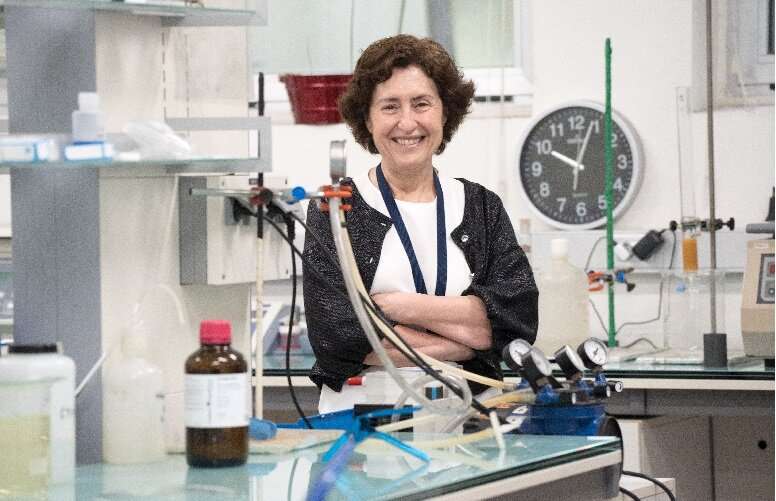Reducing radioactive waste in processes to dismantle nuclear facilities

Recent years have seen a move into a phase to decommission and dismantle nuclear power stations and facilities, above all in Europe. By 2015, 156 reactors at nuclear facilities across the world had been shut down or were being decommissioned, and by 2050 over half of the current nuclear capacity of 400 GW across the world is programmed to be decommissioned so that it can be dismantled. "In Europe this will result in an increase in radioactive waste while current storage facilities have limited capacity. Optimizing this management is crucial," said the UPV/EHU professor Margarita Herranz.
The European H2020 INSIDER project—with funding of nearly five million euros over four years—is tackling the specification of the best strategy to optimize the production of radioactive waste during the dismantling of nuclear facilities. It is focusing on the characterization strategy and on improving the methodology, above all in constrained environments, by working to propose new and better solutions for dismantling nuclear and radioactive facilities, including power stations that produce electrical power, and for environmental remediation, taking post-accident situations into consideration as well.
In situ measurements in constrained environments
"The dismantling of facilities of this type is a very costly process, the waste takes up a huge amount of space and, what is more, people do not like having repositories of this type on their doorstep. And if we also talk about dismantling many nuclear facilities, it is crucial to specify what has to be regarded as radioactive waste inside a nuclear power station and what does not; this is because the cost of managing this waste increases significantly in terms of its level of activity, and the dismantling of a nuclear power station may result in the extracting of tons upon tons of waste," explained the researcher in the UPV/EHU's Department of Nuclear Engineering and Fluid Mechanics. Although the dismantling conducted so far has exhaustively complied with the regulations in force, "a considerable part of what has been regarded as nuclear and radioactive waste does not in fact fit into that category," she said. "Erring too much on the side of caution has occurred in this respect."
Margarita Herranz, who leads the working group responsible for organizing and implementing measures in situ and conducting the subsequent analysis of the results, said that "it is essential to optimize the in situ measurements of radioactivity in walls, partition walls, machinery, metal shields, etc. owing to the impossibility of moving them in their entirety to the lab." It is worth highlighting that these are difficult measurements "because you have to see what equipment has been adapted for this purpose and obtain good results in terms of the atmosphere existing in each environment: radiation, temperature, pressure, humidity, etc." In this context "we have specified the constrained environments from the standpoint of in situ measurements in nuclear and radioactive facilities, how these constraints affect the type of equipment that is going to be used, and how these constraints may end up affecting the results or the assessment of the results that are going to be obtained," she said. They are also working to describe the different zones of a nuclear/radioactive facility and the problems that may be present in them, and also to recommend the types of instruments to be used in each of these zones.
Herranz pointed out that this project "is contributing towards optimizing the dismantling processes and towards improving the public perception of these processes. In other words, to show that they are being monitored and that work is being done in this respect. A lot of technology has been placed at the service of this aim. Basically, it is a social aim." Within the framework of the European INSIDER project, many scientific articles are being published and are being used to compile an extensive methodological guide which can be accessed via the INSIDER website. The project is hoping to improve EU policy: "We hope this work will end up influencing the drawing up of international regulations," concluded the researcher.
More information: Frederic Aspe et al, Classification and categorization of the constrained environments in nuclear/radiological installations under decommissioning and dismantling processes, Progress in Nuclear Energy (2020). DOI: 10.1016/j.pnucene.2020.103347


















